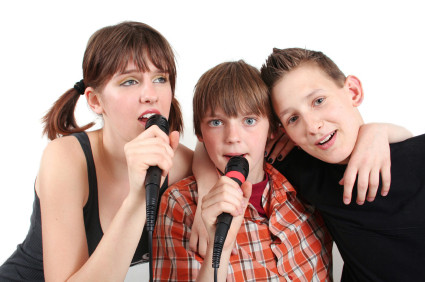I am the only music therapist in my small(-ish) town of 18,000. The music community here is fairly tight-knit, so when a music teacher is facing a year of working with students with IEPs (Individualized Education Plan, if you’re curious), he/she will likely reach out to me.
This happened about a month ago. A friend of mine is going to be working with several students with various exceptionalities—autism, brain injuries, attachment challenges, and the like. These students are enrolled in the regular group music class, but will also get some individual music instruction. My friend was interested in any ideas or suggestions I had on how to make this new arrangement successful for her students.
I figure my friend is not the only music educator who will be teaching exceptional students with unique learning styles and support needs. With that in mind, here are some general tips and things to consider if you are a music teacher who will be teaching an exceptional student this fall:
- Try to notice and capitalize on the student’s strengths. If someone really likes the drum, maybe there’s a way to incorporate drums into a lesson plan, even if it’s not part of your original plan.
- Make friends with an occupational therapist (OT). If you have a student who has physical or motor challenges, an OT may be able to help you brainstorm ways to adapt instruments, mallets, and equipment to make it a successful experience for the student.
- In all likelihood, you will have to simplify what you are asking the student to do compared with his/her peers. Learning and growth can still happen, but it may look different for the exceptional student.
- The student may need more time to process information and practice skills. This is where any individual time you get with the student may come in handy. They can provide an opportunity for you to introduce a new concept or idea before the group and a chance to practice music one-on-one.
- Be aware of the environment. Try to know and adapt to any sensory sensitivities a child may have (e.g. lights, sounds, smells, etc.). Also know that impulse control may be a challenge. If an instrument is in front of the student, he/she will probably play it—although pretty much everyone does this! Be aware that you may need to provide more redirects and prompts for your exceptional students.
- Ask if the child has any triggers. A trigger is something that will “set off” a person and may cause acting out behaviors (e.g. yelling, running, physical aggression, etc.). If a child does struggle controlling him- or herself and you have a heads up as to what the triggers are…try to avoid them 🙂
- If needed, provide a peer role model “buddy” during the group class to help redirect the child, refocus, and/or provide support as needed.
Is there anything to add to this list? If you have other ideas, please let us know in the comment box below!



 orcid.org/0000-0001-8665-1493
orcid.org/0000-0001-8665-1493






{ 8 comments… read them below or add one }
Just one thing to add – the ‘music’ (or musical result) isn’t as important as the journey and the process. If the exceptional child enjoys the experience and looks forward to returning each day or week, you’ve done a good job 🙂
Such a good help for my next dissertation project … thanx for sharing Kimberly
Guess Its the next step in education …
A very interesting topic, I came across this recently. Might be helpful to others 🙂
buy a college degree
Music is the fabric of our society, and music can shape abilities and character. Musical education can greatly contribute to children’s intellectual development as well.
Nice and very informative i am new to blog its helps me a lots for creating blogs easily more than my expectation.
Really great music education tips. I am really glad I found this article. Thanks for putting effort to gather these information. Great teachers understand that they must help build proficient young players, one day at a time.
Music is a weapon in the war against unhappiness. Music is an important life of our life. Music is something that speaks for itself, straight from the heart.
Really thankful for this post.
You must log in to post a comment.